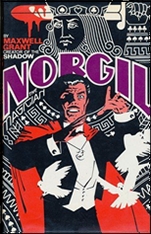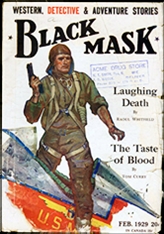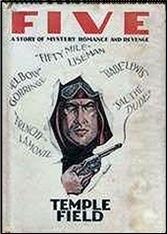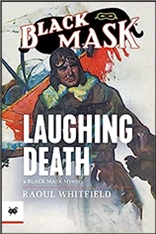PulpFest 2024 Convention Report
by Martin Walker
PulpFest 2024 got underway early on Wednesday evening, July 31, when the convention’s chairperson, Jack Cullers, opened the dealers’ room at the DoubleTree by Hilton Pittsburgh — Cranberry for vendors to set up for the convention. Many PulpFest dealers took advantage of this early setup to load in their wares and socialize with friends whom they see but once, twice, or thrice each year.

According to PulpFest’s marketing and programming director, Mike Chomko, the DoubleTree staff went above and beyond to have the hotel’s exhibition hall ready and waiting for the convention’s dealers. He recommends that all PulpFest vendors take advantage of the convention’s early set-up hours to prepare their exhibits for the convention’s official opening the next day.
PulpFest 2024 officially opened on Thursday morning, August 1, with the arrival of more dealers for unloading and setup. Early-bird shopping began around 9 a.m. and continued until 4:45 p.m. Although there were no feeding frenzies noted on opening day, most dealers reported brisk sales at the convention.
Dealers with substantial pulp offerings included Adventure House, Ray Walsh’s Archives Book Shop, Steve Erickson’s Books from the Crypt, Doug Ellis & Deb Fulton, Heartwood Books & Art, Paul Herman, Mark Hickman, John McMahan, Peter Macuga, Phil Nelson, Steranko, Sheila Vanderbeek, and Todd & Ross Warren. You could also find original artwork offered by Doug Ellis & Deb Fulton, George Hagenauer, Craig Poole, and others.

In addition to pulps and original artwork, you could find digests, vintage paperbacks, men’s adventure and true crime magazines, first-edition hardcovers, genre fiction, series books, Golden Age, Silver Age, Bronze Age, and pulp-related comic books, and more.
Additionally, one could find pulp reprints and contemporary creations including artwork, new fiction, and fanzines produced by Age of Aces, Edgar Rice Burroughs, Inc., Flinch! Books, Doug Klauba, Craig McDonald, Meteor House, Charles F. Millhouse, Brian K. Morris, Will Murray, Stark House, Steeger Books, Mark Wheatley, and others.
With more than 80 dealers registered for PulpFest 2024, the dealers’ room was a sell-out. One dealer who came on board late had to set up outside the dealers’ room, near the back entrance to the hotel.
Henry G. Franke III — the co-host of ERBFest 2024 (with PulpFest) — also set up outside the dealers’ room. His table was near the main entrance to the dealers’ room where he provided information about Edgar Rice Burroughs, ERBFest, and the 2024 Dum-Dum banquet.

The fourth annual PulpFest Pizza Party followed the closure of the dealers’ room at 5 p.m. Almost 70 pizzas were baked for the convention’s members, thanks to the generosity of PulpFest’s dealers. In fact, so many pizzas were made that the hotel ran out of some ingredients. Since it was started in 2021, the annual pizza gathering has become a very popular fixture at PulpFest. The convention’s advertising director, Bill Lampkin, promises more “Pizza at PulpFest” gatherings in the years to come.
Following opening remarks by chairman Cullers, the convention’s admirable programming line-up began with a look at the early years of Black Mask, presented by Blood ’n Thunder editor and publisher Ed Hulse and his dear friend and pulp authority, Walker Martin.
Afterward, Will Murray and John Wooley — who appeared in no less than three presentations at this year’s PulpFest — discussed the gumshoes and writers for Spicy Detective Stories. Later in the night, pulp art expert David Saunders explored the Spicy artists, including an in-depth look at Adolphe Barreaux, creator of “Sally the Sleuth.”

Tim King — a former investigator for the Department of Defense and US Intelligence Services — offered a very entertaining and well-received look at spy heroes in the pulp magazines, creating a “Mission: Impossible” task force made up of the great spy heroes.
Closing out the night were Bernice Jones & Cathy Mann Wilbanks discussing “The Women of Edgar Rice Burroughs,” one of several talks on ERB and his creations at this year’s PulpFest/ERBFest. Unfortunately, a showing of The Land That Time Forgot had to be canceled due to technical difficulties. The film, directed by Kevin Connor, turned fifty this year.
Despite a long day of buying and selling and an evening packed with programming, many conventioneers gathered in the hotel lounge to talk and reminisce about their favorite authors, cover artists, and pulp characters long into the night.

There was more buying and selling on Friday, August 2. Competing for attendees’ attention were three afternoon presentations. Starting shortly after noon, filmmaker Ron Hill offered one of two special showings of his documentary on pulp fandom, We Are Doc Savage. Questions and comments followed the showing. Afterward came the 2024 “Flinch! Fest,” hosted by John C. Bruening & Jim Beard of Flinch! Books. Joining them was Flinch writer Brian Morris.
Closing out the afternoon programming was “The Universe According to Edgar Rice Burroughs,” a panel led by Christopher Paul Carey — director of publishing for Edgar Rice Burroughs, Inc. — and Cathy Wilbanks, the organization’s Vice President of Operations. Joining them was Joe Ferrante from Pocket Universe Productions — creators of John Carter of Mars: The Audio Series — and Doug Simms of Heroes and Games.
After the dinner break came more evening programming, beginning with a look at the spicy influence on the men’s adventure magazines, presented by Bob Deis and Wyatt Doyle — co-editors of “The Men’s Adventure Library.” Next came a look at the Popular Publications years of Black Mask, presented by John Gunnison, John McMahan, and John Wooley.
Afterward, writer and illustrator Mark Schultz and PulpFest programming director Mike Chomko teamed up for a look at dinosaurs in the pulps. This in-depth presentation on the topic ran quite a bit over its allotted time as the two discussed paleontology and the pulps. It was part of the 2024 salute to the centennial of the first book publication of The Land That Time Forgot.

Tom Krabacher and Kurt Shoemaker came next with a look at America’s Secret Service Ace — Operator #5 — while Morgan Holmes, a leading expert on sword and sorcery and the work of Robert E. Howard, finished up the evening’s programming with a discussion of Culture Publications’ Spicy- Adventure Stories. The “Spicy” pulps turned 90 years old in 2024.
Rather than show the evening’s planned film — The People That Time Forgot — the convention screened the previously canceled The Land That Time Forgot. The audience was asked to turn off the lights and make sure the doors were locked if they decided to watch the movie’s sequel during the wee hours of Sunday morning.
On Saturday, August 3, the dealers’ room opened again at 9 a.m. and brisk business continued. All told, 436 people passed through the entrance to the PulpFest 2024 dealers’ room where they were tempted by more than 150 tables filled with thousands of pulp magazines, digests, vintage paperbacks, original art, and much more.
Ron Hill started off the afternoon programming with another showing of We Are Doc Savage, a documentary on fandom. Afterward, Win Scott Eckert, Sean Lee Levin, & Paul Spiteri, with Keith Howell, celebrated Farmercon XIX with a discussion about the latest offerings from Meteor House.
Closing out the afternoon programming, author and journalist Craig McDonald interviewed artist Douglas C. Klauba, whose work covers the interests of the three conventions held annually at the DoubleTree in Mars, PA: Burroughs, Farmer, & pulp.
This was the third time that PulpFest had hosted both Farmercon — which has been coming to PulpFest almost annually since 2011 — and ERBFest — a “convention within a convention” that began at PulpFest in 2021. They’ll both be returning next year, along with a third convention — Doc Con, a gathering of the fans of “The Man of Bronze.” It has been nearly a decade since the last Doc Con.
After the close of the dealers’ room on Saturday, The Burroughs Bibliophiles and fans of the author’s work gathered at the nearby Bravo! Italian Kitchen for the 2024 Dum-Dum Banquet. Named for the special gatherings of the great apes as described in Burroughs’ Tarzan of the Apes, the banquet was hosted by Henry G. Franke III and Jason Aiken, a local member of The Bibliophiles. Attended by nearly fifty people, the banquet featured door prizes, a free program book with an autographs page, and a driving-tour map of Mars, Pennsylvania, and its vicinity.
Speaking at the event was author and illustrator Mark Schultz — who was also presented with the 2024 Golden Lion Award — and Mike Conran, Vice Chairman of the Bibliophiles Board of Directors. Frankie Frazetta also provided a video recorded at the Frazetta Art Museum in East Stroudsburg, Pennsylvania, made especially for the banquet. Jim Goodwin was presented with the Outstanding Achievement Award at the banquet.
After Saturday’s dinner break came more evening programming, beginning with a look at PulpFest 2025, presented by committee members Cullers and Chomko. Afterward, the 2024 Munsey Award was presented to researcher and editor, Gene Christie. The Munsey Award recognizes an individual or organization that has bettered the pulp community — be it through disseminating knowledge about the pulps or through publishing or other efforts to preserve and foster interest in the pulp magazines we all love and enjoy.
Finishing off this year’s programming at PulpFest was an interview with Peter Wolson, the son of hardboiled detective writer Morton Wolson (who wrote as Peter Paige). The tireless John Wooley conducted the interview.
Closing out the evening was the convention’s Saturday night auction. It featured over 300 lots of material including nearly 250 lots of science fiction books, magazines, and reference materials from the estate of Charles Danowski, a former school superintendent with a love for the genre. Perhaps the highlight of the auction was a copy of the October 1933 issue of Weird Tales, featuring the iconic “Bat Woman” cover of Margaret Brundage. It sold to a silent bidder for $2000.
The remainder of the lots consisted of several groupings of The Shadow, Doc Savage, and The Phantom Detective, about ten issues of Weird Tales — mostly from the 1930s — Edgar Rice Burroughs first editions, and a half-dozen or so number one pulps, including South Sea Stories, The Skipper, and Jungle Stories.
Although the dealers’ room opened a final time again on Sunday, August 4, buying and selling opportunities were limited as dealers packed up and prepared for the drive home.
PulpFest 2025 will take place August 7 – 10 at the DoubleTree by Hilton Pittsburgh — Cranberry in Mars, Pennsylvania. The convention will be celebrating “Masters of Blood and Thunder” in 2025. The 150th anniversary of the births of Edgar Rice Burroughs, Rafael Sabatini, and Edgar Wallace will happen next year.
You can learn more by visiting http://www.pulpfest.com. I hope to see you at the convention.
—
EDITORIAL UPDATE: August 26th. I’ve just added photos sent to me by Bill Lampkin. Thanks, Bill!
















